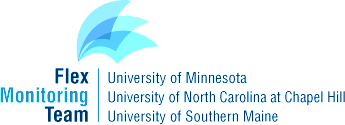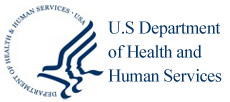From the Pennsylvania Department of Human Services (DHS)
Starting in March, recipients of Supplemental Nutrition Assistance Program (SNAP) benefits will no longer receive the Emergency Allotment (EA) additional payments created during the COVID-19 public health emergency and will resume receiving one SNAP payment per month.
These additional SNAP payments have been crucial for people over the past three years during the COVID-19 pandemic. Ongoing economic uncertainty and high food prices are contributing to food insecurity for many Pennsylvanians, and we expect the impact of the end of SNAP EA payments to be significant.
Additionally, the 2023 cost-of-living adjustment (COLA) for Social Security and Social Security Income (SSI), which is also set by the federal government, prompted an 8.7 percent increase to Social Security payments. SNAP eligibility thresholds — also set at the federal level — did not rise proportionally. Because of this, approximately 249,000 households will experience a decrease in their base SNAP benefits by an average of $40 per household, which will take effect in March when EAs end. The Department of Human Services (DHS) anticipates approximately 5,000 to 20,000 households will be disenrolled from SNAP due to the Social Security increase. These federal changes will primarily affect older Pennsylvanians and seniors.
Help is available for any individuals or families through Pennsylvania’s charitable food partners. Anyone who can donate food or resources is encouraged to help your local food banks and food pantries as they prepare to meet this potential additional need.
What are SNAP Emergency Allotments?
With funds made available due to the federal COVID-19 emergency, DHS began providing EAs as a second monthly payment to SNAP recipient households that were receiving benefits since March 2020. The EAs increased the SNAP budget amount to the maximum available amount for their household size or, since early 2021, were a minimum of $95. These payments were distributed separate from the initial payment as an extra payment each month.
Why are the extra payments ending?
The EAs are ending due to passage of the recent federal legislation. February will be the last month EAs are sent, and SNAP recipients will only receive one regular SNAP payment starting in March. This change will happen for all SNAP recipients, and SNAP households will receive letters via mail about the change in SNAP payments.
Update your personal information
Updating your personal information will help ensure households are receiving the maximum SNAP benefit based off their individual circumstances. Changes to household size, income, or expenses can be reported:
Resources for SNAP Recipients
DHS recognizes the impact these changes may have on households and wants to make sure families that need food assistance know where to go for help:
For Pregnant Women and Families
For Older Pennsylvanians
- If you are a SNAP eligible senior citizen, apply to receive additional vouchers redeemable at more than 800 farm stands and more than 200 farmers’ markets in Pennsylvania. The Senior Food Box Program can also provide you with additional shelf-stable groceries. Learn more about these programs from the Pennsylvania Department of Agriculture.
Additional Food Resources
- PA 211 — Connect with various local food resources through the United Way of Pennsylvania by calling 211 or visiting www.pa211.org.
- Feeding PA — Find local food banks and other food assistance programs.
- Ending Hunger and Food Security in Pennsylvania — Visit these sites from DHS and the PA Department of Agriculture for information on assistance programs and other resources.
How Can Pennsylvanians Help?
Support Your Local Food Network
Acting Secretary Valerie Arkoosh recently encouraged Pennsylvanians who are able to support their local food banks and pantries. Pennsylvania’s food network works tirelessly every day to be a resource and safety net for their communities. Small donations can grow into a big difference, so please do what you can so they can continue their life-saving work.
Help Spread the Word
DHS has developed a communications toolkit designed to help organizations, advocacy groups, government agencies, and others spread awareness about the changes to federal laws that will end the SNAP Emergency Allotment payments. Materials include newsletter text, social media posts, print documents, and more. Please use these materials to help educate and inform your audience about the upcoming changes.






